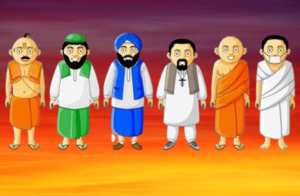What is Sankhya Philosophy?
Sankhya means to understand spirit and matter. Sankhya philosophers describe the material world as made of twenty-four parts: the five gross elements, the three subtle elements, the five knowledge-acquiring senses, the five working senses, the five sense objects, and pradhana, the unmanifested modes of material nature.
The five gross material elements are earth, water, fire, air, and ether. Then come the subtle elements. Finer than ether is mind, finer than the mind is the intelligence, and finer than the intelligence is false ego, the false conception that I am matter. The five knowledge-acquiring senses are the eyes, nose, ears, tongue, and skin. The five working senses are the voice, legs, hands, anus, and genitals. And the five sense objects are smell, taste, form, touch, and sound.
That analysis of the material world into twenty-four parts is called Sankhya. It is a full analysis of everything within our experience. And above the twenty-four elements is the spirit soul. And above the soul is God.
Sankhyites cannot find the soul. They are like the material scientist in that they simply study material objects. They have no information above that. Now I am talking with you; so the Sankhya philosophers cannot explain what is that thing which is talking. Similarly, the medical doctor, after dissecting the body cannot find what is working, the spiritual force. And because the materialists cannot find even the particles of the Supreme Lord – us living entities – what chance do they have of finding God? So neither the yogis nor the Sankhyites can find God.
Source: A.C. Bhaktivedanta Swami Prabhupada (2014 edition), “The Quest for Enlightenment”, Page 96

















































